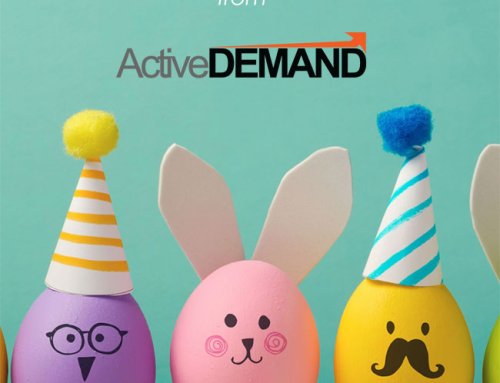How-to Turn Your Physical Events into Webinars
With Coronavirus and social distancing becoming a reality, many companies are looking for options to turn physical events and conferences into virtual ones. Event promotion companies should be actively promoting webinar services to their clients because there’s a lot of relevant information about running a webinar that event companies can share. With that in mind, we thought we’d share our recipe for how we do webinars.
Webinars have several key factors for success:
- Promotion to get a decent number of attendees
- Effective presentations
- Solid administration of the event
Many events companies already have good practices in place for promotion and getting great speakers, it’s the administration around running a webinar that’s new. For this article, we’ll focus on the administration part of running a webinar.
Pre-Work prior to Webinar date being finalized
If we’re doing a webinar with a partner, we’ll discuss potential topics and audiences to promote. It’s important the webinar topic and content match with what the audience feels is valuable. Once we’ve got a rough idea of the topic, we’ll throw around some titles of the webinar and finally, we’ll work out a synopsis of the webinar. These are important steps because the title and synopsis will be the scaffold the presenters build their presentation deck on. This will usually involve:
- Initial discovery meeting: throw around some titles, who is presenting and when, who’s hosting the webinar, what promotion will be done, and who the target is
- The webinar title and synopsis are usually decided upon and emailed back and forth. Get presenter headshots and bio’s at the same time.
- Schedule a rough draft review and a final run-through meeting at appropriate times. (We like t-1 week and t-2 days respectively for those two meetings)
Webinar Creation and Registration
Once the webinar date is picked, there’s a lot of work to be done. The first thing you should do is create the webinar in the event management and video conferencing platforms that you’re using. Ideally, you have some integration between the two because you’ll need to keep an RSVP list that is up to date. We like using a web form that people fill out to register because it captures attendee information in one spot. Then we just integrate with GoToWebinar/GoToMeeting to get unique join URLs for everyone.
Webinar Promotion
Once you’ve got a way for people to sign up for the webinar, you’ll need to pick a target demographic or list of prospective attendees and build out marketing creative. We’d recommend:
- Social media posts
- Email invites to appropriate lists
- Include the event in your newsletter if you send those out
- On-location signage should reflect the upcoming webinar and how to sign up
- Website promotion (we like using dynamic content for this)
- Any other way to get more of the desired audience into the webinar
One key that we’d highly recommend is to STOP marketing to people who either sign up for the webinar or indicate they’re not interested.
Webinar Reminders
Nothing sucks more than getting a ton of RSVPs but then having few people show up to a webinar. For those people who signed up for the webinar, we like doing:
- An auto-responder once they’re signed up. This includes information on the webinar, and appropriate calendar invites so they can add it to their work calendar
- Reminder 24 hours before the webinar, also including info on how to join
- Reminder 1 hour before the webinar
You may also want to consider adding social media posts, or other ways of reminding people who RSVP’d about the event.
Running the Webinar
Finally, we run the webinar. We prefer having a host or moderator for the webinar.
The host creates the webinar 15-30 minutes early in “organizer” mode so that presenters can come on, chat about last-minute presentation deck changes (they ALWAYS do that!), and test audio/video. Avoid wireless headsets because batteries die and they always seem to die at the most inopportune times.
You should consider whether you start at the top of the hour or 5 minutes later. Many attendees in B2B will be running from their last meeting to join your webinar, so at the least, keep the essential presentation material out of the first 5-8 minutes.
Once you’ve started, the host should come on. They’ll review the software, and how attendees ask questions or engage, and the host should ask a few quick questions at the start. This is so the presenters understand what kind of person is attending and what they are expecting, right from their mouths. Once the polling is done, the host introduces the presenters, and hands presentation control over to them.
We recommend having the host handle questions. The host should also have a few canned questions in case no one asks anything during the question period.
Once the presentation and the Q&A period is over, the host closes out the webinar, lets people know if they can expect a recording, etc.
Content Re-Use
Don’t throw away all that great content once you’re done with the webinar! Consider saving a version of the deck to PDF to use, use the recording of the webinar in other marketing, slice and dice the webinar to serve different unique video purposes, write a companion blog post using insights from the webinar, and maybe even strip the audio out of the recording and turn that into a podcast.
How can ActiveDEMAND help with Turn-Key Webinars?
ActiveDEMAND can automate much of the tedious webinar administration work.
- All the promotion and reminder emails, registration pages, etc can be saved into a webinar “recipe” that you duplicate for new webinars. Just replace the dates, content, and creative, and it’s easy to use the rest of the established structure. This means we’re never reinventing the wheel on how webinars get done, we’re just varying copy and audience.
- Choosing demographics/companies to target from inside the platform is easy, and performing marketing on those targets is easy as well
- People who sign up or indicate they’re not interested will stop getting marketed to
- We turn the registration page into a “watch recording” page so that people can find the recording later




